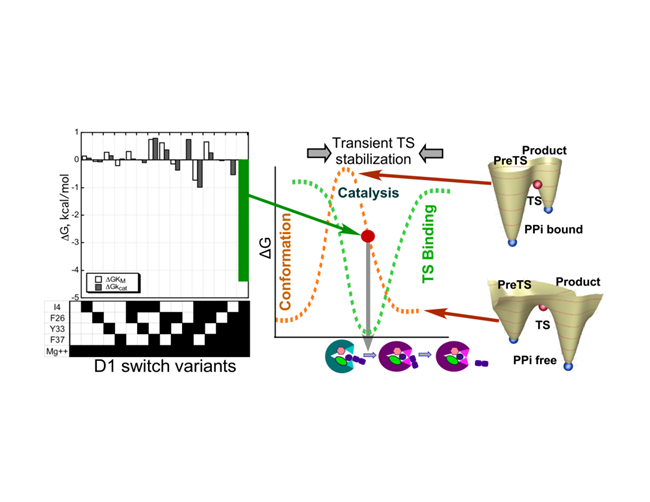
Abstract:
Genetics, bioenergetics, and catalysis are all difficult to imagine emerging without pre-existing historical context. This property is often posed as a “Chicken and Egg” problem; its resolution is concisely described by de Grasse Tyson: the egg was laid by a bird that was not a chicken. Hofstadter introduced the idea of strange loops to link such paradoxes, familiar from M. C. Escher’s intertwined staircases, to the Gödel incompleteness theorem. Extending self-reference from mathematics to material systems, he argued that when two conditional—if and only if—processes control one another, the resulting reciprocally-coupled gating can generate ever-expanding novelty. Examples from experimental biochemistry and biophysics suggest the logic of incompleteness may underlie the creativity of non-equilibrium thermodynamic steady-states. (i) Studies of aminoacyl-tRNA synthetase (aaRS) evolution led us to recognize that both protein folding and the genetic coding table depend intimately on amino acid side chain behaviour. Two sets of rules—folding and coding—form a self-referential feedback loop accelerating the evolutionary search for polypeptides whose substrate recognition properties allow them to enforce the coding rules according to which they, themselves were assembled. (ii) Coupling between ATP utilization and protein conformational change as Tryptophanyl-tRNA synthetase (TrpRS) activates tryptophan creates an escapement or ratchet: Mg2+ ion accelerates catalysis if and only if the conformation changes, but the conformation change is thermodynamically favourable if and only if the resulting PPi product is released. (iii) AARS Urzymes—130-residue excerpts that accelerate both amino acid activation and tRNA acylation—appear to be catalytically active molten globules. Two rare species—folded Urzyme and reaction transition state—must thus occur simultaneously to achieve catalysis. (iv) Expansion of the genetic code from a binary alphabet to the current 20 letters likely obeyed a variational principle minimizing dissipation of information and free energy, and aaRS evolution converted the former type of dissipation into the other to enhance fidelity. The paradox in each example is resolved by coupling two if, and only if, conditions. One drives, and each restricts fluxes through, or “gates” the other. Reciprocally-coupled gating may help unite the axiomatic foundations of genetics, bioenergetics, and catalysis. As a physical analogue for Gödel’s logic, strange-loops provide a natural metaphor around which to organize these data, linking biology to the physics of information, free energy, and the second law of thermodynamics.
Speaker: Dr. Charlie Carter, Dept. of Biochemistry and Biophysics, University of North Carolina Chapel Hill.

Speaker bio:
Charlie Carter received his undergraduate BA in Molecular Biophysics and Biochemistry from Yale University. He did his PhD research under Joseph Kraut at UCSD (1967-1972) and did postdoctoral work under Aaron Klug at the Medical Research Council Laboratory of Molecular Biology in Cambridge, UK (1973-1974). His publications unite enzymology (studies of combinatorial mutagenesis to investigate long-range coupling of domain motion to catalysis) with the structural and functional evolution of the aminoacyl-tRNA synthetases (aaRS) and their cognate tRNAs, using diverse biophysical techniques. His interests lead him to examine fundamental rhymes between Biology and Physics. Combinatorial mutagenesis and multi-dimensional thermodynamic cycle analysis of energetic coupling, and high throughput computational analysis of conformational transition-state structures revealed how allosteric escapement mechanisms convert the free energy of NTP hydrolysis into work and information. Developing unique areas of protein engineering, he showed that aaRS Urzymes represent an experimentally secure outpost from which to recapitulate the very early evolution of biological catalysis and genetic coding. That work led to identifying interactions by which aaRS and tRNAs form cognate pairs, and to adducing convincing evidence that the earliest cognate pair derived from a bidirectional ancestral aaRS gene encoding ancestral Class I and II aaRS on opposite strands. Work correlating amino acid phase equilibria to tRNA identity elements and to protein folding now combines with the bidirectionality of ancestral Class I and II aaRS coding to furnish a viable alternative to the origin of genetic coding in an RNA world.
Host: Liam Longo, ELSI.
Date: Fri, 8 January, 9:00-10:00 JST (Fri, 8 January, 00:00-01:00 UTC)
Venue: Online
